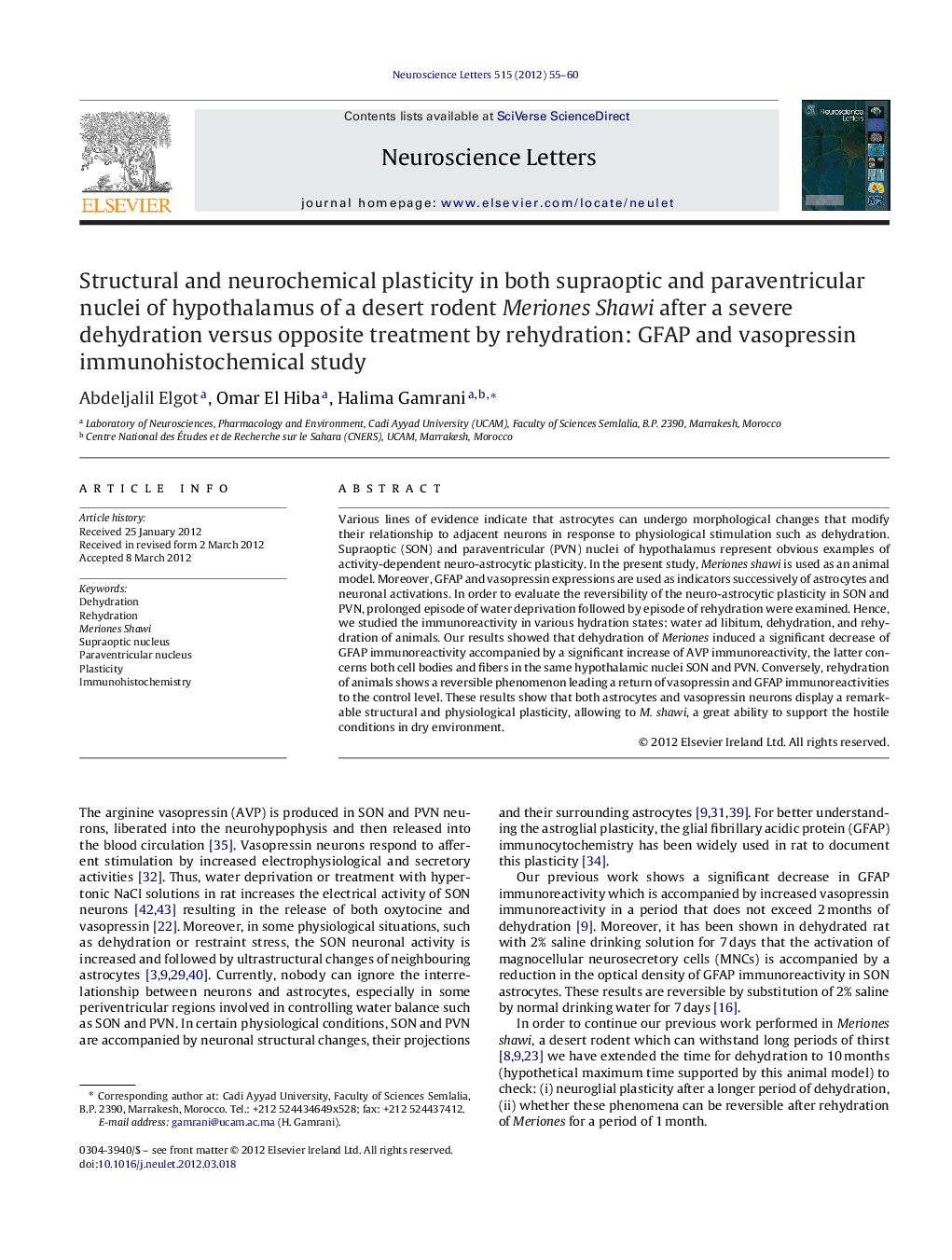| Article ID | Journal | Published Year | Pages | File Type |
|---|---|---|---|---|
| 4344649 | Neuroscience Letters | 2012 | 6 Pages |
Various lines of evidence indicate that astrocytes can undergo morphological changes that modify their relationship to adjacent neurons in response to physiological stimulation such as dehydration. Supraoptic (SON) and paraventricular (PVN) nuclei of hypothalamus represent obvious examples of activity-dependent neuro-astrocytic plasticity. In the present study, Meriones shawi is used as an animal model. Moreover, GFAP and vasopressin expressions are used as indicators successively of astrocytes and neuronal activations. In order to evaluate the reversibility of the neuro-astrocytic plasticity in SON and PVN, prolonged episode of water deprivation followed by episode of rehydration were examined. Hence, we studied the immunoreactivity in various hydration states: water ad libitum, dehydration, and rehydration of animals. Our results showed that dehydration of Meriones induced a significant decrease of GFAP immunoreactivity accompanied by a significant increase of AVP immunoreactivity, the latter concerns both cell bodies and fibers in the same hypothalamic nuclei SON and PVN. Conversely, rehydration of animals shows a reversible phenomenon leading a return of vasopressin and GFAP immunoreactivities to the control level. These results show that both astrocytes and vasopressin neurons display a remarkable structural and physiological plasticity, allowing to M. shawi, a great ability to support the hostile conditions in dry environment.
► Effect of prolonged dehydration (10 months) versus rehydration on Meriones shawi. ► Dehydration induced a significant decrease of GFAP immunoreactivity in SON and PVN. ► This decrease is accompanied by a strong expression of vasopressin immunoreactivity. ► Rehydration of animals shows a reversible phenomenon. ► This neuroglial plasticity, allows to Meriones, a great ability to support thirst.
